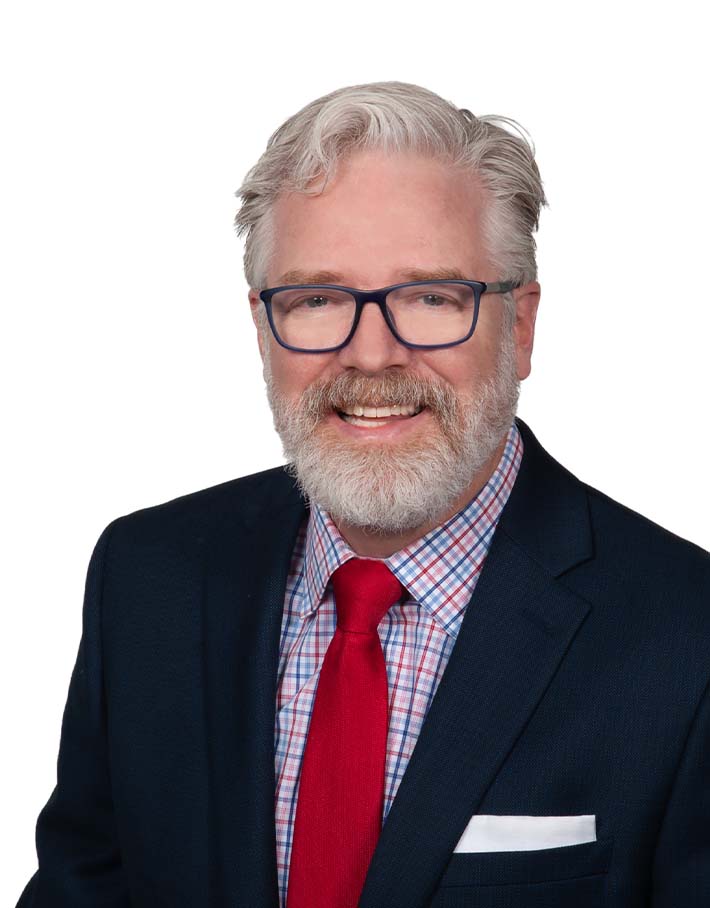The Value a Paraplanner Can Add to Your Business
By Bill Davis
Subscribe to our original industry insights
Paraplanners and the role they can play can make an Advisor’s life easier and more productive. Join Bill Davis, who is leading Oyster’s experienced Planner Services team, and Matt Thomson, Head of Training at MoneyGuide Pro, as they discuss the challenges Advisors and their firms face in today’s market, and how having Paraplanners can help resolve some of these issues.
Transcript
Oyster: Welcome to the Oyster Stew podcast, where we discuss what’s happening in the industry based on what we see as we work with regulators and clients. Oyster consultants are industry practitioners. We aren’t career consultants. We’ve done your job and we know the issues you face. You can learn more about Oyster Consulting and the value we can add to your firm by going to our website – oysterllc.com.
Libby Hall: Hi, everybody. Welcome to the Oyster Stew podcast. I’m Libby Hall, marketing analyst at Oyster Consulting, and today we’re going to be talking about paraplanners and the role that they can play to make an advisor’s life easier and more productive. With me are Bill Davis, who’s leading Oysters experienced planning services team, and Matt Thompson, head of training at MoneyGuide Pro. First, let’s talk about the challenges advisors and their firms face in today’s market. Matt, could you speak to that a little bit?
Matt Thomson: Clients and investors in general are hearing a lot of noise, right? They go to their credit card website, their bank website, their 401k, and on all of these sites, they’re offered these calculators. You might call them planning solutions or essentially, click here to see if you’re on track for retirement based on (blank). And they’ll kickstart it with whatever basic information they know about, the account that you have with them. Employers are doing this, too. I found a study the other day that showed that 80% of employers either have in place or are working to implement, a financial wellness program for their employees. And so there’s all these folks whether, they’re different advisors or different firms, that are offering their advice to investors – your potential clients, and prospects. And it just really speaks to the importance of offering planning to everyone in your book of business and making it clear even to prospective users, that this is an offering that I have, that I’m going to make available to my clients. And so that’s really a big challenge. There’s a lot of responsibilities that advisors have. The criticality of offering planning has never been higher. And we really think this partnership with Oyster is going to allow the capability of offering planning to more clients and be able to compete with all that noise that’s out there in the industry with different offerings for planning, and calculators, and that type of thing.
Bill Davis: Yeah. Good points, Matt. I think the other thing that a FA wants to think about in the current environment, is that planning and financial plans for clients can be a valuable tool, if they work through the current regulatory environment and around reg BI. But again, it’s important to note that this is just one tool in that toolbox, the planning software by itself does not resolve for reg BI, but it is a good tool in the toolbox to get them there and working towards what’s in the client’s best interest.
Matt Thomson: I’d say that’s consistent, Bill, with what we’re hearing for firms’ plans for addressing that regulation issue is having, saved reports of, from a MoneyGuide plan or whatever financial planning tool they’re using, as part of the documentation required to satisfy those requirements. So a little bit about what Oyster’s gone through when we started this relationship several months ago. The idea is that we have a number of financial advisors that are trying to figure out how to make time for creating plans. They know the value of it and have bought into that. But it’s all about the scalability. Oyster also saw this as an opportunity to help advisors. And so, they came to us kind of as, obviously, the subject matter experts of MoneyGuide. And we developed the very first, at MoneyGuide paraplanner certificate program.
It started with putting them through one of our boot camps that we offer for advisors, which is a six-hour session. Then we did seven hours with the folks at Oyster going through the program where we really do a deep dive into some of the hiccups that sometimes people run into and putting plans in. Maybe the common questions and data entry errors that that will occur and putting plans in. And then we finished it up after going through those several case studies had an assessment at the end, which was a rather robust, Bill might agree with me here, a rather robust case study at the end, where they had to put a poll, all the pieces from a case study and, and figure out how to get it entered into MoneyGuide. So it was a great experience for us and, we’re maybe ultimately looking how we can apply that elsewhere. But we’re excited about this initial partnership, as we find some of our current clients and potential prospects may be able to benefit from these services that are Oysters’s offering.
Bill Davis: Thanks, Matt. We really enjoy our close relationship with MoneyGuidePro, the training we received, and we look forward to working closely with you all, as we produce MoneyGuidePro plans for FA’s moving forward. Our goal here is to work closely with financial advisors to help them increase their book as they move forward. We know many, many advisors like to spend their time with their clients, networking, growing their business. And while MoneyGuidePro is not a difficult program to work with, it does take time and that’s one of the things that we strive to work with FA’s on is to take that time off their hands, to help them with gathering the info, organizing that info, reviewing assumptions with the FA and putting that information for them into the plan, and developing a target plan. Then closely reviewing that with them and creating the reports so that they can go over the plan with the client firsthand.
So it’s an interaction from the beginning where the FA is gathering data all the way through the completion of the plan, and then the FA can work closely with the advisor or with the client, and really have an interactive conversation. They can use the Zoomer tool or they can use PlayZone when talking with the client, which is an interactive tool. And again, to really make that plan come alive and to work closely with the clients, our goal is to work with the FA to free up time so that he can spend his time selling and gathering more assets and working closely with the clients.
Matt Thomson: Yeah, I think you’re exactly right, Bill. And there’s an acronym that came out years ago called HABU. You might have seen it. HABU, and we kind of embraced it here at MoneyGuide, speaks to your ‘Highest and Best Use’. And I think that’s a critical piece of considering, whether or not you use it, a paraplanner is appropriate for you. But thinking about, where is your time best spent? One interesting thing along with that, we did a fee survey this past fall for 2020. And I think we surveyed over 1600 different financial advisors. And we asked them a lot of things like, are they charging for planning and what’s their fees? And are they doing a separate fee or hourly fee or subscription. But the average fee for those that were charging a separate fee for plans was $2,482 there in 2020, which is up nearly 50% since 2015.
So we’re seeing firstly, more and more people charging that separate fee, I guess, as they are better able to communicate the value of the plan. And, of course, the fee itself continued to increase. Hourly fees were up about 25% over that same time period at about $257 an hour. So, you know, all that to say, it really seems to lend itself to thinking through, okay, what is my highest and best use? Where’s my time best spent? And to Bill’s point, in our opinion, we strongly feel it’s in the presentation of the plan where your advice and solutions are really brought to light using a lot of the engaging tools inside of MoneyGuide. But in a, not to mention that what we’re seeing as some of the average costs or hourly rates, or even subscription fees that some advisors are putting forward, lend itself to allow him to engage a paraplanner to help with some of that more keyboard centric type of work that’s required to get plans entered. Okay.
Bill Davis: And the other thing we’ve seen as we work through plans with advisors, is that there generally is a return on investment. When the advisor works closely with the client, as they go through the planning process, they’re typically able to uncover assets that they previously didn’t know about. And as they work with the client on those assets and create a holistic plan that covers everything they hold internally at that particular firm, as well as assets at other firms that are able to gather assets, which again, increases revenue for the FA and is a return on the investment.
Matt Thomson: And that reminds me of a firm a BD, I believe, started to track the assets that were entered in a financial plan for their firm, what percentage of them were assets that were under management versus held away? And so they determined over, I think it was a 10-month period, there were $16 billion in the financial plans that they had created. 10 billion of the 16 were held away assets. And it really helped to prove to them, at least one of the many potential values of doing a plan is uncovering those assets, right? Clients are more motivated then to really disclose those so they can get the true probability of success for their plan.
There’s one other firm I’ll throw out there, an example of kind of the ROI of planning. They started to track two different groups of financial advisors. One group at their firm that was not offering planning at all to their clients. And then another group that was doing 10 or more plans a year. So not a huge number or huge requirement. I mean, essentially a plan a month or more. What they saw between the two groups is that those doing 10 or more plans a year saw a 56% increase in their revenue. And largely it’s because again, we’re disclosing those assets. But we also find that advisors that are positioning some of their financial solutions in the context of a plan, clients find much more trust in seeing that as a needs-based proposal of a solution, as opposed to more of a back of the envelope type of calculation of a certain need. So all that is to say, it seems like the more plans that are created, the evidence backs up the fact that it’s improving the results for the advisors doing so.
Bill Davis: And that really backs up our philosophy around the paraplanning service and planning services as a whole, helping advisors put that together, put plans together so that they have the time for the presentation, they have the time to recruit more clients. And then the more plans they do, the more assets they potentially uncover and the closer they are with their clients. And they’re not spending the time entering the data, they’re actually spending quality time with their clients and able to schedule throughout the year different, critical touch points so that they can continue to work closely with their clients face to face or, by zoom these days, or by teams. So, it enables the FA to develop that close relationship, even closer relationship with the client because they have more touch points.
Matt Thomson: Or even the client’s kids too. As we think about the baby boomers retiring now, for several years are preparing for that wealth transfer that will inevitably happen. Having those relationships with the adult children of those clients is going to be really important and a great way to do it. A great excuse to reach out to those folks is ‘I’m now offering planning for all my clients or the children of my existing clients’, and having a paraplanning service available like this really makes that scalable and actionable.
Bill Davis:
And many advisors are proactively thinking about that and having the time to talk with clients and their children and creating that generational succession plan if you will, creating those touch points so that they can stay in touch with the entire family as their financial life and financial journey moves forward down the path.
Libby Hall: Well, everybody, that’s all the time we have for today. Thanks Bill and Matt for sharing your perspectives around paraplanning and planning services.
Bill Davis: Yeah. Thanks, Matt, for joining us. And thank you to everyone who’s listening to this podcast. If you have any questions, please don’t hesitate to give us a ring. We’ll be more than happy to help in any way we can.
Libby Hall: If you’d like to learn more, you can visit our website at www.oysterllc.com or call 804-965-5400. If you’d like to learn more about the information Matt shared, please visit moneyguidepro.com. Have a great day.
Oyster: Thanks for listening. And if you like what you heard, make sure to follow the Oyster Stew podcast on whatever platform you listen to. If you’d like to learn how we can help firms start, run, protect, and grow their business, visit our website at oysterllc.com.



